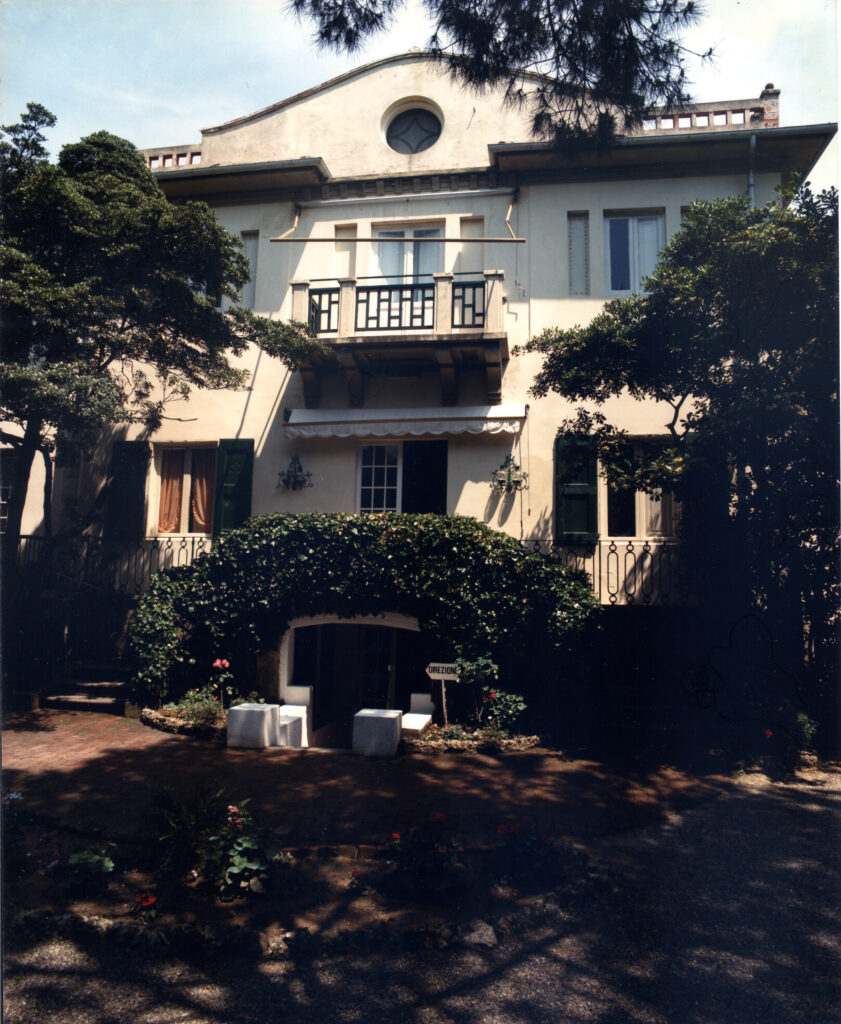The Vacation Home
Lido di Camaiore

At the end of the 19th century Lido di Camaiore was still called Fosso dell’Abate (or Fossa dell’Abate) and it was an area with very few homes and deserted beaches, where you could hear only the sound of the sea and the seagulls. The area of the river delta was wild, and there was only a small wooden bridge that connected it to Viareggio, already then, a fashionable city with theatres, cafes and bathing establishments. Not everyone loved the crowds of people there during the summer season, and so in the early 20th century a few artists in search of tranquility found refuge at Fossa dell’Abate. Plinio Nomellini, who had already chosen to live in Torre del Lago since 1901, had “discovered” this area; he was enthusiastic about the peaceful environment and decided to move here. He wanted to share his discovery with his friend and colleague Galileo Chini, (together they had collaborated on “Sala del Sogno” at the Venice Biennale of 1907, where the King of Siam had admired Chini’s work so much that he invited him to Siam to decorate his new Throne Palace.)
In December 1907 Nomellini writes to Chini, proposing to buy a parcel of the pine forest: “… the pine forest B we’ll divide in half… the number of pine trees you would have on your side is about 300. Think that a similar opportunity won’t happen again, so you should be immediately ready to shell out the amount indicated above … You would thus become a man who owns a forest where you could build your house surrounded by a park adorned with statues and busts …”.
Galileo Chini already loved Versilia and accepted, but he did not build his house right away. He did so finally 1914, after his return from Siam full of honors, and the house would become for his entire life his much beloved Vacation home. It was a white, simple house, in which references to Viennese secession joined echoes of the East, with a lush garden that he would portray countless times, with an airy interior on whose walls he painted trees and marine life, memories of the East and lanterns. Chini returned there every summer, until the end of his life, and painted myriad landscapes of the surroundings which constitute a pictorial elegy in honor of the sea, the mountains, the pine forests and the light of Versilia.
In the meantime, other villas and town homes were built, some of them belonging to celebrities of the period: from Eleonora Duse to Marta Abba, Pirandello to Rosso di San Secondo. Bathing establishments and hotels were also built on this coast, and slowly Fossa dell’Abate lost its wild appearance: the delta was regimented and the pine forest cut. Modernity had arrived here too, and the area’s name changed and became Lido di Camaiore.





